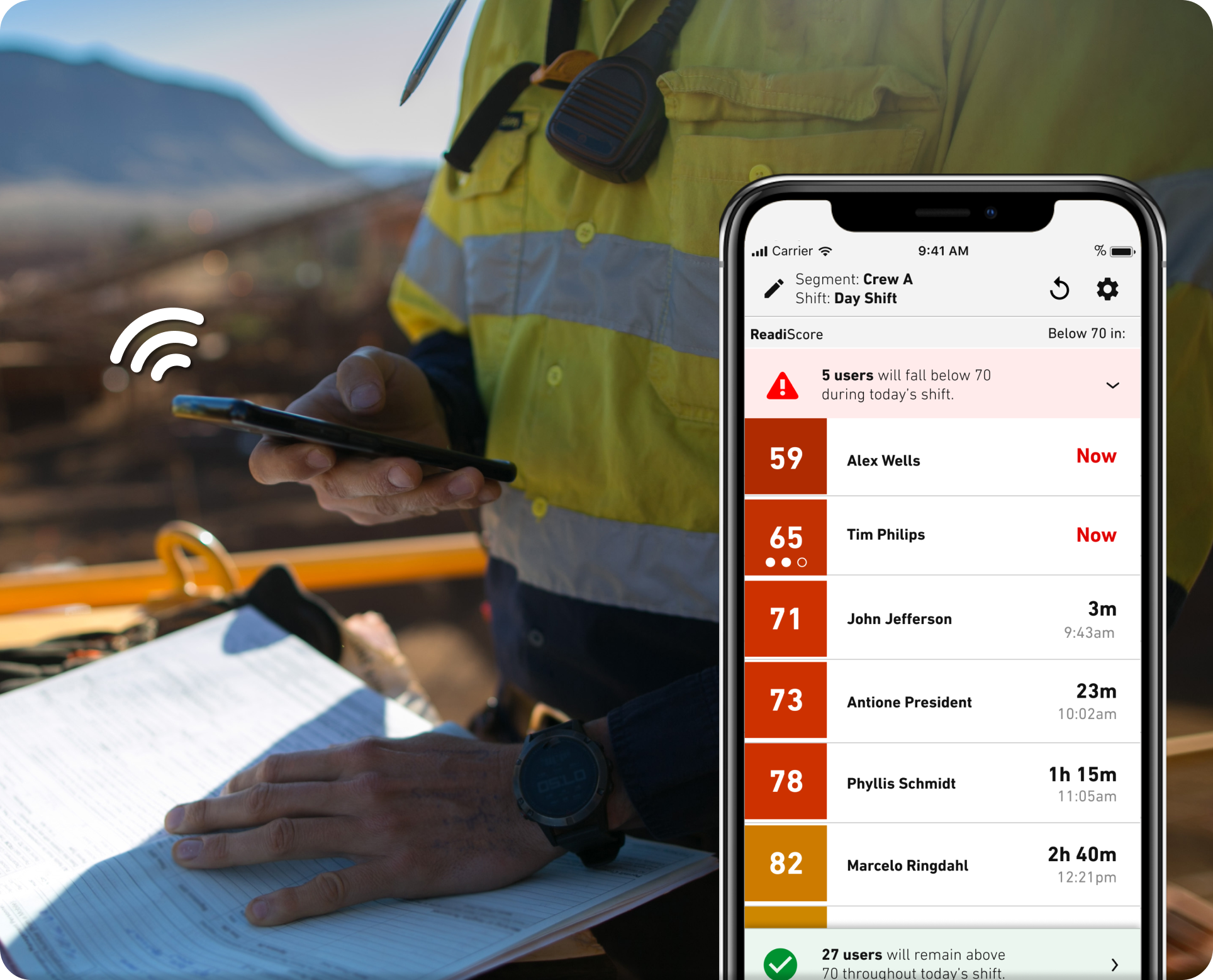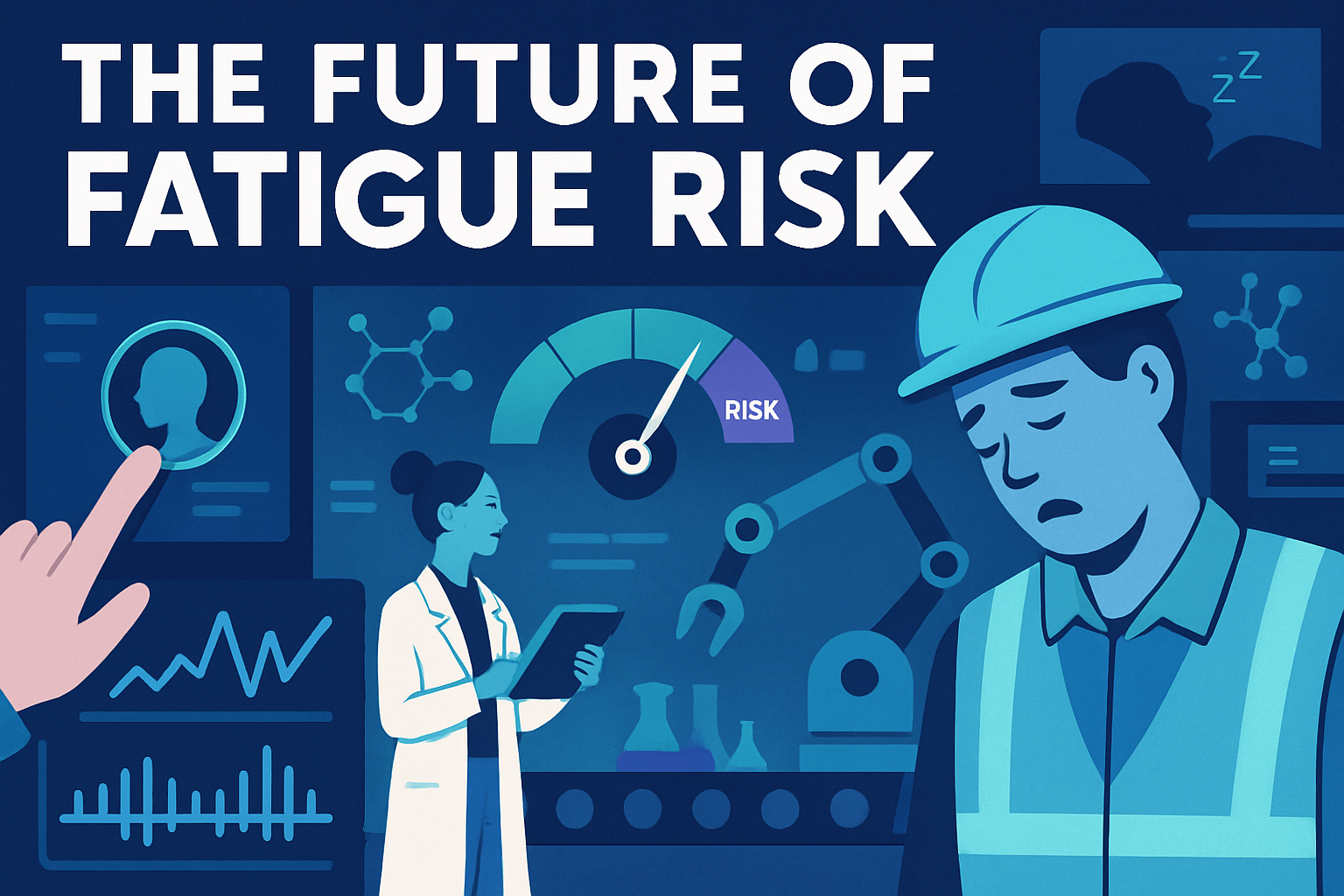How Energy-Based Hazard Recognition Reduces Risk in Mining Safety (And How Readi Amplifies the Impact)
Summary
In mining operations, hazard recognition is the frontline of safety. Yet, studies show that workers identify less than half of the hazards they face during a typical shift. The energy-based safety model, popularized by the “Energy Wheel,” offers a powerful cognitive framework to close that gap. Meanwhile, tools like Readi amplify this method by continuously monitoring fatigue and readiness, addressing unseen risks such as cognitive blind spots and time-of-day vulnerabilities.
Together, these approaches move safety from reactive to predictive.
Why Energy-Based Hazard Recognition Matters
Despite years of safety training and experience, workers often overlook key hazards, especially those requiring higher cognitive effort to detect. According to studies cited in Professional Safety Journal, the average worker identifies only about 45% of present hazards.
Why?
Because not all hazards trigger instinctual responses.
Gravity and motion-based threats (e.g., fall risks or moving vehicles) are typically easy to spot. But pressure, mechanical tension, chemical exposure, or heat are processed in the cerebrum, requiring complex thought, not reflex. These hazards are often missed due to mental fatigue or situational blindness.
The Energy Wheel addresses this by helping workers identify risks in 10 categories of hazardous energy, like electrical, mechanical, thermal, and biological (see Table 1 below). This system uses a simple visual wheel that crews can reference before and during shifts to structure their thinking and scan for less obvious threats.

Table 1: The 10 Energy Categories in the Energy Wheel
| Energy Type | Description | Examples |
|---|---|---|
| Gravity | Objects falling or workers falling from height | Suspended loads, ladder use |
| Motion | Moving objects or substances | Mobile equipment, traffic |
| Mechanical | Rotating or moving parts | Gears, augers, cables |
| Electrical | Electrical current or equipment | Power lines, tools |
| Sound | High-decibel environments | Nail guns, engines |
| Pressure | Stored gas or liquid pressure | Hydraulic systems |
| Temperature | Extreme heat or cold | Steam pipes, engines |
| Chemical | Hazardous substances | Solvents, silica dust |
| Radiation | Electromagnetic or nuclear energy | Welding, UV exposure |
| Biological | Living hazards | Insects, viruses |
Source: Energy Wheel Model from PSJ (Dec 2021)
Where the Energy Wheel Excels and Where It Needs Support
Field tests show that using the Energy Wheel can improve hazard recognition by 30%, especially for the hard-to-see categories. Its structured approach adds cognitive prompts to safety briefings and job hazard analyses.
However, the Energy Wheel doesn’t account for human readiness: how alert, rested, or cognitively sharp a worker is at the time of the scan. This is where the Readi fatigue risk management platform for mining enters the conversation.
Readi: The Missing Piece in Hazard Recognition
Readi, developed by Fatigue Science, is a predictive fatigue management platform that uses ELD and scheduling data to assess workers’ fatigue risk levels, hour by hour, for the shift ahead. By integrating Readi data into shift planning and pre-task briefings, safety leaders can make informed decisions such as:
-
Reassigning tasks based on individual fatigue scores
-
Scheduling high-risk jobs during peak alertness periods
-
Identifying crews or individuals at elevated risk of blind spots
“Even with the Energy Wheel, a tired worker won’t spot a pressure hazard buried beneath routine,” says Solange Messier at Fatigue Science. “Readi provides the real-time visibility you need to act before a mistake happens.”
In environments like mines, where sleep debt and night shifts are common, fatigue silently amplifies all hazard categories, especially the cognitively demanding ones. Readi not only detects this risk, it visualizes it in dashboards and mobile apps used by safety supervisors.
How Mining Teams Can Use Readi + the Energy Wheel Together
Here’s how innovative operations can integrate both systems:
| Scenario | Energy Wheel Role | Readi Role |
|---|---|---|
| Pre-Shift Briefing | Structured hazard review across all 10 energy types | Displays fatigue risk by crew or individual |
| Post-Incident Review | Categorizes hazard type (e.g., motion, mechanical) | Verifies if fatigue was a contributing factor |
| Task Assignment | Prompts hazard-specific PPE and control checks | Suggests reassignments based on alertness scores |
| Ongoing Safety Culture | Builds a shared language around risk | Adds predictive data to shift planning and audits |
You shouldn't just be asking, ‘What are the hazards?’ You should be asking, ‘Are our people even alert enough to see them?’” says Solange Messier at Fatigue Science. “That’s a seismic shift in proactive safety.”
Frequently Asked Questions
What is energy-based hazard recognition in mining safety?
Energy-based hazard recognition is a framework that categorizes hazards by their energy source (e.g., gravity, electrical, pressure). It helps workers identify overlooked threats by offering a structured scan across common energy types. This model is especially useful in complex environments like mines where invisible or stored energy is prevalent.
How does Readi support energy-based hazard recognition?
Readi enhances the Energy Wheel. While the Energy Wheel helps workers see risks, Readi measures whether they’re ready to see them. Its data identifies when cognitive blind spots are most likely to occur and empowers leaders to mitigate that risk proactively.
Can fatigue actually lead to missed hazards?
Yes. Fatigue directly impairs the cerebrum, reducing a worker’s ability to process complex hazards like tension, chemical exposure, or high pressure.
Is the Energy Wheel relevant outside mining?
Absolutely. The same principles apply in construction, utilities, manufacturing, aviation, and any field where situational awareness is mission-critical.
Final Thoughts
Mining safety is entering a new phase, one where risk isn’t just something you react to but something you predict and prevent. Energy-based hazard recognition gives workers a sharper lens for spotting threats. Readi brings real-time clarity to when those threats are most likely to slip past.
Together, they offer a dual-layer defense: cognitive structure and biological insight. As fatigue risk continues to drive incidents across industries, solutions like Readi will prove essential not only in spotting hazards, but in making sure someone is actually awake to see them.
Related Posts
-
Shifting From Reactive Dash Cam Safety to a Proactive Safety StrategyDash cams are now common across trucking fleets, mine sites, and people-transport operations. They help reconstruct incidents,...
-
Why Fatigue Risk Management Is Becoming a Strategic Priority in Safety-Sensitive IndustriesFatigue has always existed in safety-sensitive industries. What has changed is how well we can see it and how quickly it can be...
-
The Future of Fatigue Risk ManagementIn 24/7 mining and industrial fleet operations, fatigue is a high-frequency, high-cost risk multiplier. Historically,...




